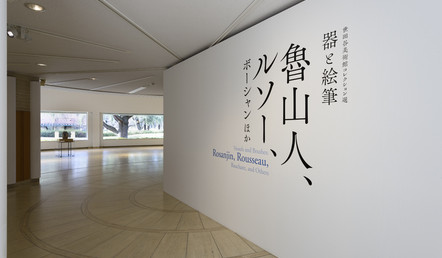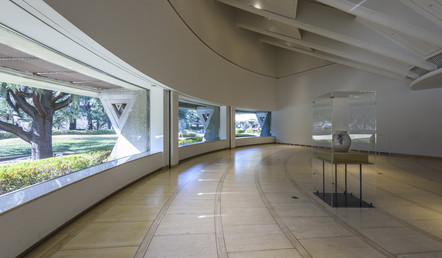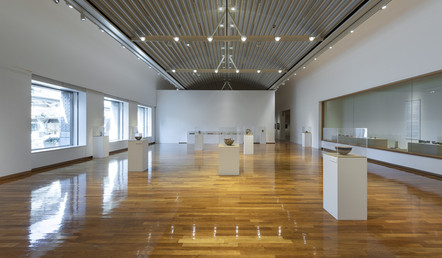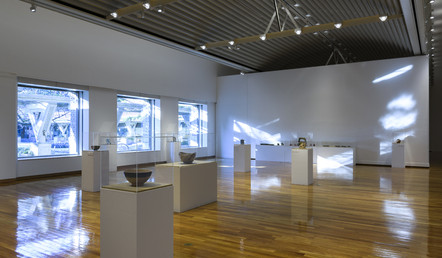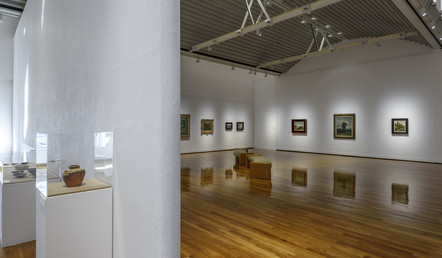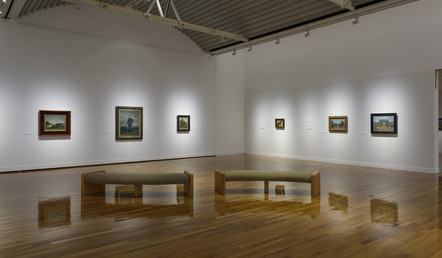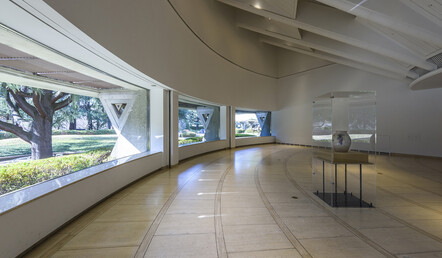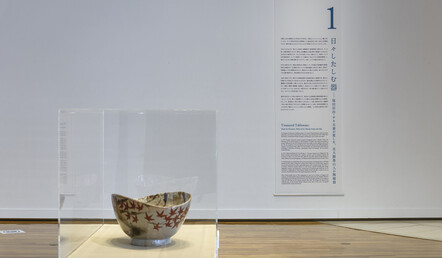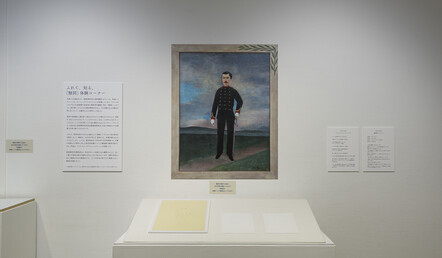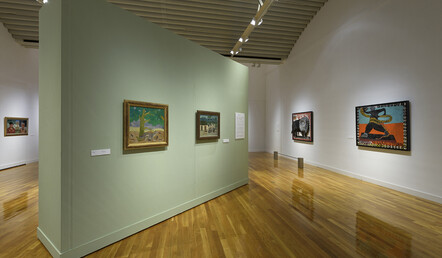1. Treasured Tableware: Made by Rosanjin, Beloved by Shioda Iwaji and Saki
The Setagaya Art Museum’s holdings include 156 works by Kitaoji Rosanjin, which are known collectively as the Shioda Collection after their former owner Shioda Iwaji (1895-1983). How did Shioda, a businessman living in Setagaya, and Rosanjin come to know each other?
In 1925, Rosanjin opened the upscale restaurant Hoshigaoka Saryo in Akasaka, Tokyo. The following year he rented property in Kita-Kamakura to build a kiln where he intended to produce tableware for use at the restaurant, but he was unable to secure sufficient water at the site. He was completely at a loss, but Shioda came to his aid. Shioda ran the drilling equipment company Tone Boring (today called Toa-Tone Boring), and used his firm’s state-of-the-art technology to drill down and locate a groundwater source for Rosanjin. The two became friends thereafter.
In 1935, Shioda established the Tone Boring Co. Yunosawa Laboratory in Higashi-Izu. The facility included accommodations for company customers and the president’s friends and associates, as well as a tea room and a kiln called the Tone Kiln. Shioda invited Rosanjin to make tableware for entertaining guests, and Shioda himself studied the basics of pottery there.
In 1936 Rosanjin was expelled from his business partnership at Hoshigaoka Saryo, and found himself forced to make a living from ceramics alone. Shioda was an enthusiastic supporter and actively purchased his works, particularly pieces with a tranquil beauty that came to be familiar, well-loved everyday utensils, in a rich variety of genres including seal carving, calligraphy, ceramics and lacquerware. Among them are heartwarming vessels that can be described as “collaborations” with Rosanjin. Shioda and his wife Saki, a teacher of the tea ceremony, cherished these items and enjoyed using them in daily life.
When Shioda passed away in 1983, preparations to open an art museum in Setagaya were underway, and Saki decided to donate all of their Rosanjin works to the new museum. However, she hesitated to part with these beloved items at once, and the gift took place in two stages, in 1985 and 1986 (the year the museum opened). Since then, the Setagaya Art Museum has exhibited parts of this precious Shioda Collection from time to time, and it has gained recognition both in Japan and overseas.
2. Picking Up the Brush Again Today: The Myriad Worlds of Henri Rousseau and the Naïve Artists
Henri Rousseau is often seen as the most prominent naïve painter. Yet, despite this association, Rousseau never referred to himself as a naïve artist or assembled a group of likeminded comrades. With this in mind, what exactly led to the birth of the naïve label?
Rousseau diligently taught himself to paint while working as a minor functionary at the customs office in late 19th-century Paris. His creative expressions, which defied conventional wisdom in the art world, were initially greeted with derision at the Salon des Indépendents. In the early 20th century, however, a number of artists began to take an interest in Rousseau’s work. These included young avant-garde figures such as the painter Pablo Picasso, the poet Guillaume Apollinaire, and the critic Wilhelm Uhde.
At the time, Europe was undergoing a period of political and social transition, which included a shake-up in the art world. Rousseau, a self-taught painter of fantastic pictures, was “discovered” amid an increasing desire for “naïve” work, which had not been contaminated by existing educational and cultural systems.
This was followed by the discovery of other self-taught artists such as the gardener André Bauchant, the former circus wrestler Camille Bombois, and the housekeeper Séraphine Louis, who in the 1920s came to be referred to as the Sacred Heart Painters or 20th-century Primitives. The catastrophe of World War I led to a distrust of reason among European intellectuals. The works of naïve artists gradually came to be idealized as a primordial example of purity and innocence.
In 1966, the first large-scale Japanese exhibition of these works, Henri Rousseau and the Naïve Painters, was held at Seibu Department Store in Tokyo. The novelist Oe Kenzaburo responded by asking, “Is there really any such thing as innocent art?” This raised the alarm that the works were being couched in a palatable idealism, obscuring their rich and complex power.
Despite the concise term “naïve,” the works are varied and diverse, having emerged out from each artist’s national or regional background. In some cases, such as the former Yugoslavia, naïve artists and their works received attention within the context of social reform and modernization. Meanwhile, the Japanese artist Hisanaga Tsuyoshi’s paintings are based on his personal memories as a prisoner of war in Siberia, wielding a crushing blow to contemporary history. Backed by the artist’s individual lives, the works also function as a reflection of the times.
